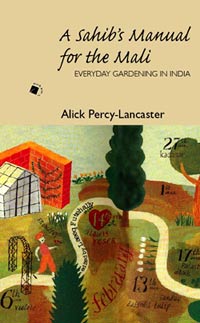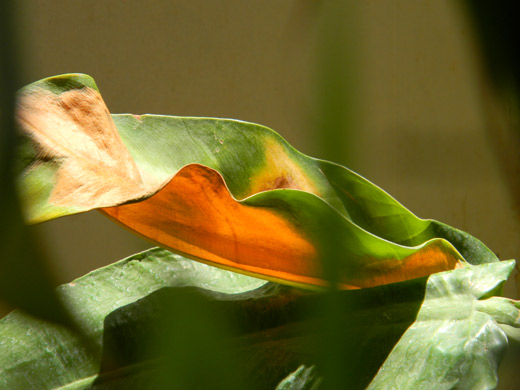“Some years ago, a small bundle of ragged, yellowing papers fell into the hands of the Delhi Historian, Dr Narayani Gupta. They were 55-year old copies of a modest informal monthly bulletin called Garden Chat brought out by Alick Percy Lancaster who was then the Superintendent of the Horticultural Operations, Government of India”.

Thanks to the efforts of the Professor, who had preserved all the original copies of Percy Lancaster’s monthly bulletin, we get to read this delightful book – A Sahib’s Manual for the Mali.
For those who want to start gardening, want more from their gardens or see more flowers and fruits of their efforts, this is the book to read and implement. Devoid of gimmicks and gloss, this book packs in substance and practical information, in the simplest of manner. A Sahib’s Guide for the Mali is a month-by-month gardening manual – a must read for gardeners and flora lovers of India.
A Sahib’s Manual for the Mali is a lovely compilation of monthly instructions and experiences, articles, tips, quotes and poems, written and collected by Alick Percy Lancaster, who was then, in charge of beautifying India’s capital and keeping it resplendent and stunning. Thanks to him, India has some of the finest and huge gardens, laid out in the most aesthetics and scientific way.
Alick Percy Lancaster, whose job profile ranged from planting and maintaining thousands of avenue trees, miles of green hedges, to laying out and caring for gardens, has shared is experiences, experiments, insights, suggestions and learning in a month-by month format.
This is one of the rare sepia-tinted books that has the beauty of eloquent English (as it is written by a old British man who worked in India). The language is pure delight. Deprived of slang, and modernism, it reads like fresh air. Akin to reading Jane Austen works, Percy weaves his tendril magic with words.
There are stories and surprises around every nook and corner. Practical wisdom laced with soul warming thoughts makes this one hard-to-put-down book, esp. if you are in love with plants.
Apart from the instructions for the month, there is information on vegetable gardens, planting trees, weeding, fertilizers, potting and repotting, dealing with pests, making tree guards, ideal tree heights, compost making, organic practices (from the good old days) and more. Needless to say, this book is a lot more relevant in today’s world as we try our best to go-green.
Garden Chat pages were composed in the by-gone era, almost 60 years back. He wrote it in an era wherein onions were 5 annas per seer – the currency and weights that we have no idea of.
Indeed, a lot of time has passed by, garden species have evolved, and our environment has gone from bad to worse. But the book shines through from the sepia tinted era. It re-iterates that there are no short cuts to gardening. And that some things, like love, do not change and last forever.
If you are a farmer, botanist, urban dweller or balcony gardener, this book has a lot of time-tested wisdom by the person who was a garden lover himself. Midst the seedlings and mud, he shares many poems and quotes, the most famous of them being:
“The Tree” by Joyce Kilmer:
I think that I shall never see
A poem lovely as a tree.
A tree whose hungry mouth is prest
Against the earth’s sweet flowing breast;
A tree that looks at God all day,
And lifts her leafy arms to pray;
A tree that may in summer wear
A nest of robins in her hair;
Upon whose bosom snow has lain;
Who intimately lives with rain.
Poems are made by fools like me,
But only God can make a tree.
This book weaves the magic of the bygone era of colonial buildings, the fascinating flora, the excitement of discovery of new species, the humble pride of labour, and lot more. His writings, essays, month-by-month guide, tips, observations, comments, and collection of poems and quotes make this book a forever pocket companion.
You do not have to read the entire book at one go. A chapter a month is good enough to keep you on your toes and your garden brimming with bounty of plants, fruits, flowers, vegetables or whatever you may want. The book gives information on what, when, where, how and sometimes why you should plant or do a certain thing.
From dreamy poem to the math of planting potatoes and peas, he has a lot of things to say. There is so much botanical and scientific information in this book but the manner in which it has been written and shared wont weigh you down. From January to December, it is technical knowledge in the garb of poetry. Its food for the body that becomes food for soul.
The book was written by someone who found his calling in the plants, who loved his job, loved nature and life. And to read his thoughts in the form of a book is a rare gift indeed. The way it reads, we live.
A Sahib’s Manual for the Mali is for those whose soul is steeped in damp earth and eyes wake up to sights green. You can buy a copy from Amazon here:
A Sahib’s Manual for the Mali: Everyday Gardening in India
Or you can read a few pages on Google Books:










